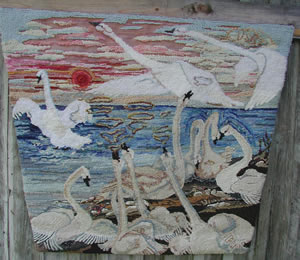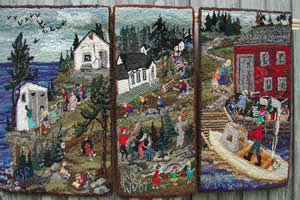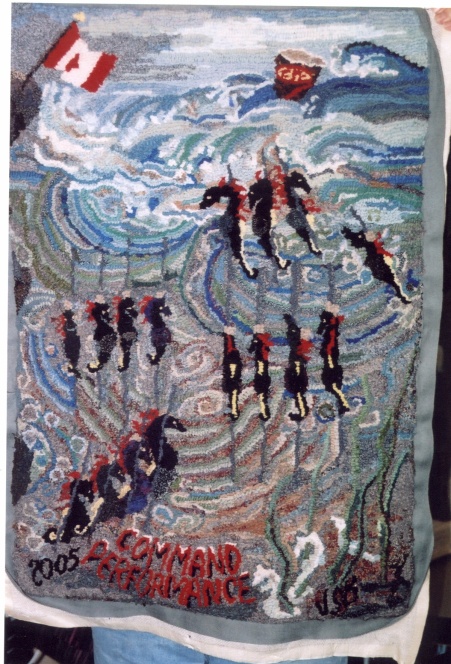| S Dragons in Pine Tree In Private Collection |
When I first moved to Lunenburg County in 2003, I started hooking and adopted it as my current art form After a couple of workshops on dyeing wool, I came to the conclusion that dyeing was not for me -- too much like following recipes. I prefer to find and recycle wool garments that are a color that I think might be useful in hooking. My stash of wools now includes many different textures, as well as colors. In Dragons in the Pine Tree, I used a variety of wool textures for the background-- the idea being to create a non-definite environment (blended) for the dragons. My major textural interest in the piece was to use silks and sparkly metallic synthetics to create the effect of light flickering on the dragons themselves. This effect is not picked up well by the digital camera; neither does it show well on the Web. I also used wide gold colored silk strips to create the scaly breast of the Golden Dragon. These strips were pulled through and then laid like overlapping shingles on top of the backing. Using a variety of textures makes my hooked pieces very tactile-- people want to touch them. I use tweeds a good deal-- both for the texture that they contribute, and because they help in making transitions from one colored area to another. They also blend extremely well. |
 for Hooking For Sale gallery
for Hooking For Sale gallery
In the Seahorses piece, I used tweeds for the water, to create a graduation in color from the bright blue-green at the surface water down to the green-brown depths. Since seahorses will take the color of their surroundings, like chameleons, my task was to create different environments where different types of seaweeds would grow. In the deeper, dimmer area, red seaweeds grow better. The seahorses in that area are redder, or striped like the reeds. (Think "Strawberry Roan" and "Appaloosa!") The main intent in the SeaHorses piece was to treat the seahorses like regular land horses, in the matter of color. Some Land horse breeds are based on color, such as the Palomino, and the Appaloosa. There are also "strawberry roan" horses, and black stallions. Seahorses around the world come in variations of these same colors. So this piece was based on these color facts. It made the seahorses more familiar. People can relate to these particular seahorses, as if they were standard land horses. |
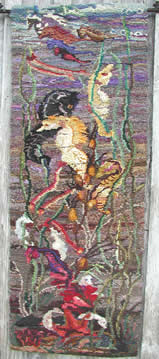 Seahorses In Private Collection Seahorses In Private Collection |

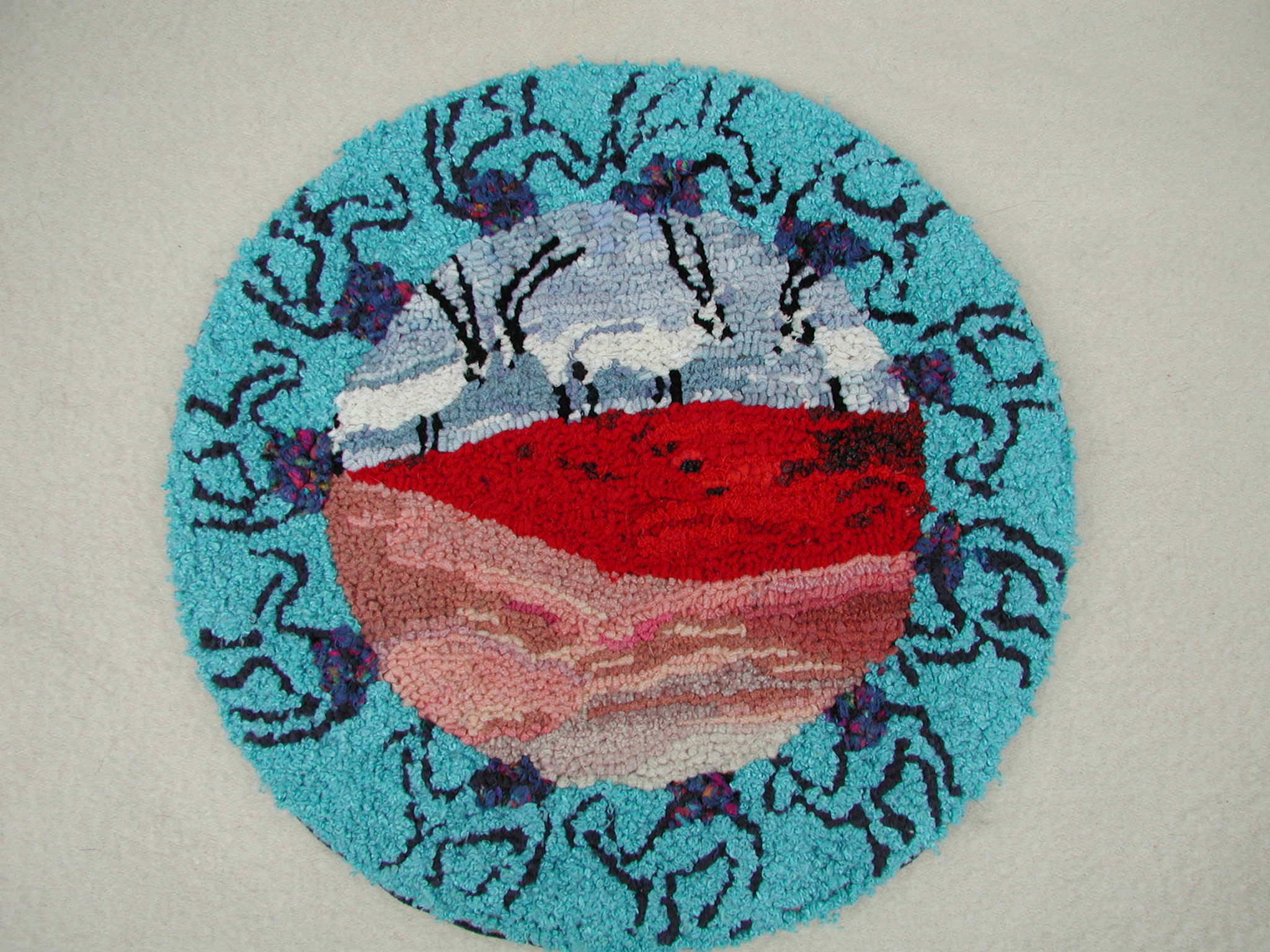 Oryx
Oryx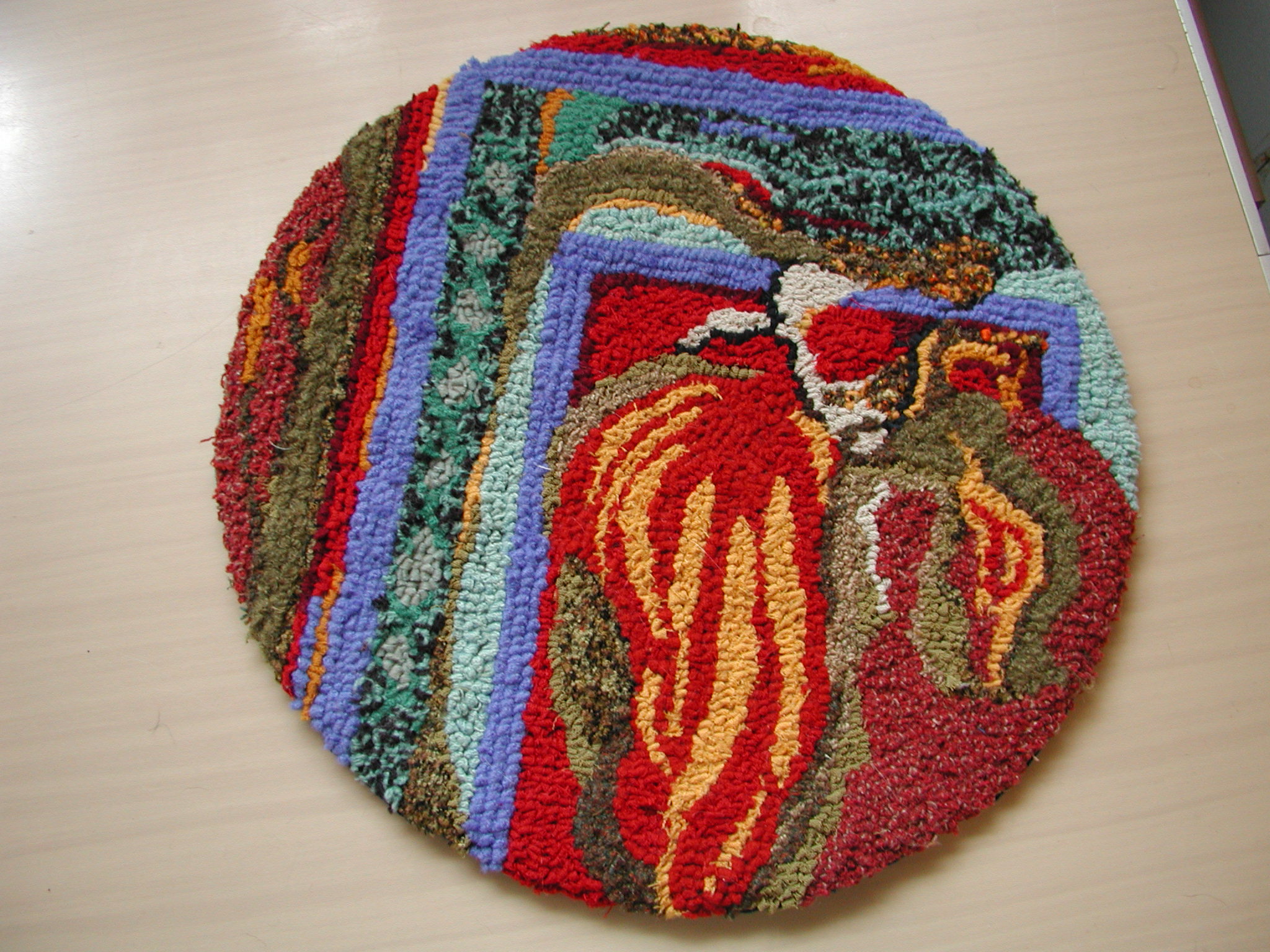 Hanging Gardens
Hanging Gardens
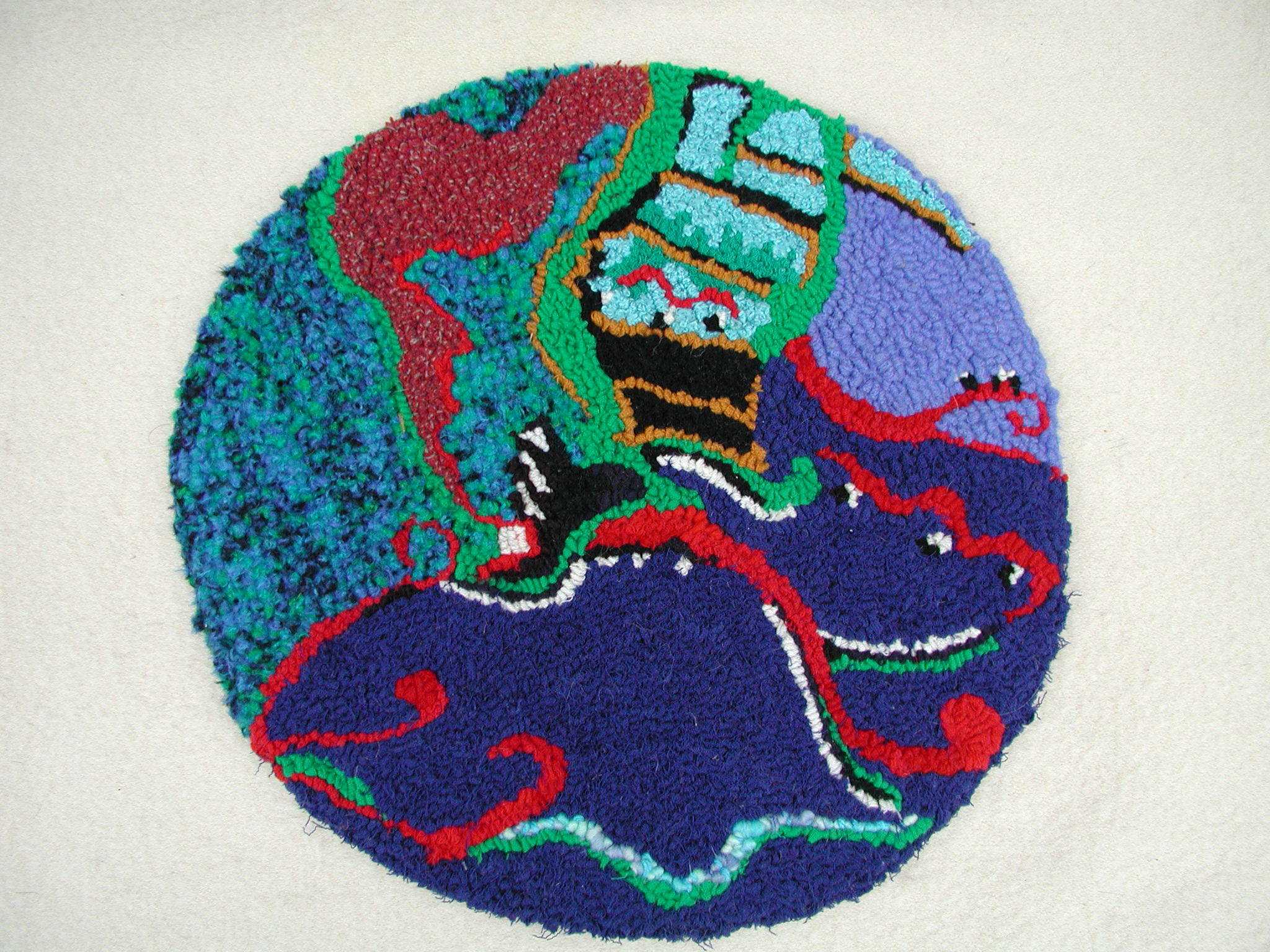 Tigris
Tigris 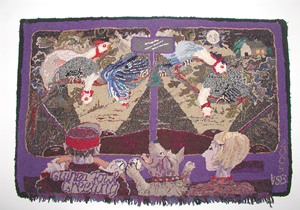
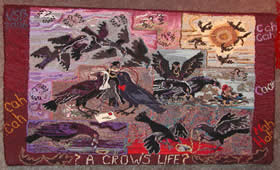 A Crow's Life. Available for Sale
A Crow's Life. Available for Sale